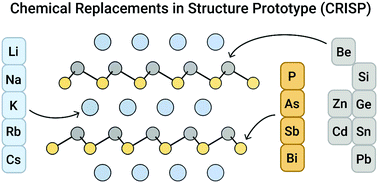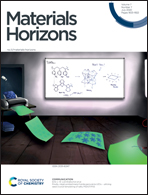Computational discovery of promising new n-type dopable ABX Zintl thermoelectric materials†
Abstract
Computational prediction of good thermoelectric (TE) performance in several n-type doped Zintl phases, combined with successful experimental realization, has sparked interest in discovering new n-type dopable members of this family of materials. However, most known Zintls are typically only p-type dopable; prior successes in finding n-type Zintl phases have been largely serendipitous. Here, we go beyond previously synthesized Zintl phases and perform chemical substitutions in known n-type dopable ABX Zintl phases to discover new ones. We use first-principles calculations to predict their stability, potential for TE performance as well as their n-type dopability. Using this approach, we find 17 new ABX Zintl phases in the KSnSb structure type that are predicted to be stable. Several of these newly predicted phases (KSnBi, RbSnBi, NaGeP) are found to exhibit promising n-type TE performance and are n-type dopable. We propose these compounds for further experimental studies, especially KSnBi and RbSnBi, which are both predicted to be good TE materials with high electron concentrations due to self-doping by native defects, when grown under alkali-rich conditions.

- This article is part of the themed collections: #RSCPoster Conference and Materials Horizons Emerging Investigators Series 2020/2021


 Please wait while we load your content...
Please wait while we load your content...